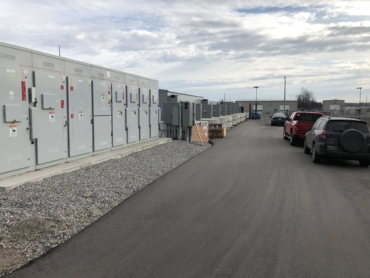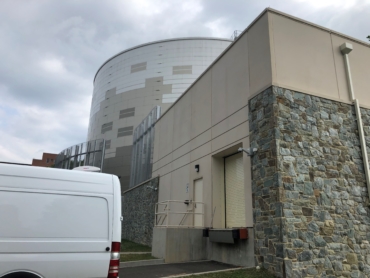While working on the series and starting into renewable energy reliability it was noted that there is a lot of discussion surrounding the availability of such technologies as wind or solar in social media and on the news. We will deviate from the primary generation series to discuss utility scale energy storage systems. In this article we will discuss the existing energy storage systems and then their reliability and pros and cons in the following part of this series before we return to major generation.
In the development of utility-scale renewable energy systems such as wind and solar, as well as a number of other existing and potential systems, the ability to store electrical energy efficiently has always been a primary concern. The US Government, and other governments, had invested in research in this area since de-regulation and through the planned implementation of each technology. It is known that the wind does not always blow, and the sun does not always shine. However, wind and solar are part of a much larger picture to further utilize our resources and, outside of politics, were never meant to replace other forms of energy production but to be part of a larger strategy to find and incorporate resources such as methane recovery and geothermal.
 Figure 1: 5 MW flywheel storage facility
Figure 1: 5 MW flywheel storage facility
The amount and quality of wind for wind turbines and the amount of light available in a day is limited based upon the location of the systems. There is a lot that goes into placement including proximity to transmission and distribution as well as wind and solar maps. As these systems continue to expand there must be ways to capture the energy and be able to put back into the system when demand calls for it.
 Figure 2: Thermal Storage System
Figure 2: Thermal Storage System
Presently, there are five primary utility-scale storage systems. These include (ref. US EPA):
- Pumped hydroelectric – during non-peak hours pumps move water to elevated reservoirs or tanks. When the energy is required the water is gravity-fed through turbines, which are sometimes the pumps. This was one of the earliest storage systems used to assist with peaking times following de-regulation when generation owners no longer maintained ‘spinning reserves’ (see below).
- Compressed air – air is compressed and stored then released during peak times to run a turbine generator.
- Flywheels – one of the more reliable systems, non-peak energy is used to spin up a mass to maintain kinetic energy through a motor/generator and drive. The energy is bled off when needed.
- Batteries – one of the more popular method of storage is a simple battery and includes lithium ion, lead acid, lithium iron, and some newer methods.
- Thermal energy storage – the electrical energy can produce chilled water or ice then convert back to a selected temperature and the energy recovered and converted through a heat pump.
There are a number of storage projects in development in the USA, which total over 25.2 GW (as of March, 2018) and 192 Terawatts Worldwide (Nov. 2020) per Sandia National Labs. Of the USA-based energy storage systems, 94% is pumped hydroelectric. The remaining 6% are split into thermal storage at 669 MW, battery at 733 MW, compressed air at 114 MW and flywheel at 58 MW. The surprise is that, outside of pumped hydroelectric, flywheel technology is both reliable and relatively inexpensive and is more popular outside of the USA while battery storage is the primary focus of research and building.
In the upcoming article we will start with flywheel technology and its implications and reliability.
Additional Information:
Spinning reserves: prior to electrical de-regulation in the mid-1990s, as a direct result of the Energy Policy Act of 1992, large coal fired and nuclear powerplants would keep additional generation online in the form of running some generators unloaded. This allowed load balancing for plant reliability but primarily provided immediate power during peak times or when unexpected loads would occur. A coal or nuclear plant would take hours or days to bring a generator online for a large number of reasons, so some peaking capabilities were made available on the grid even during electrical regulation. Starting in the mid-1990s gas-turbines and other generation technologies that could come online quickly were developed and added to the national grid. The challenges related to ensuring that the quality of power supplied was ‘good enough’ for utility transmission and distribution. As these interconnection standards were introduced, the ability for other sources including homeowner generation became a reality such that investments in home solar power could produce either lower costs or some income. The interoperability standards continue to be developed as new technologies and energy storage are introduced.
Eliminating Fossil Fuels – a fact check: from the political and environmental side there is a push to eliminate fossil fuels from the energy portfolio and move to alternative energy and all-electric. The challenge is that most of these systems utilize fossil fuels in their manufacture and operation. At the deepest point, the electrical insulation used for wires and insulating components are primarily polys (ie: wire insulation is usually a polyamide, polyimide, or some variation/combination) which is plastic, which is derived from oil. Materials that make up the blades, lubricate and seal the gearboxes and bearings, etc. in wind turbines are all fossil fuel based. Even in electric vehicles, the most common way to cool the motors in order to make them effective is to spray lubricant (read oil) on the windings and recover it for the transmission or other moving parts. At this time, other animal-fat and vegetable-based lubricants have not been developed with the properties found in fossil fuel oil and there have been no easily applied substitute for electrical and mechanical components. The next time you open your circuit breaker box at home or look in an electrical panel at work recognize that a majority of the components within are plastic.
 Figure 1: 5 MW flywheel storage facility
Figure 1: 5 MW flywheel storage facility Figure 2: Thermal Storage System
Figure 2: Thermal Storage System




